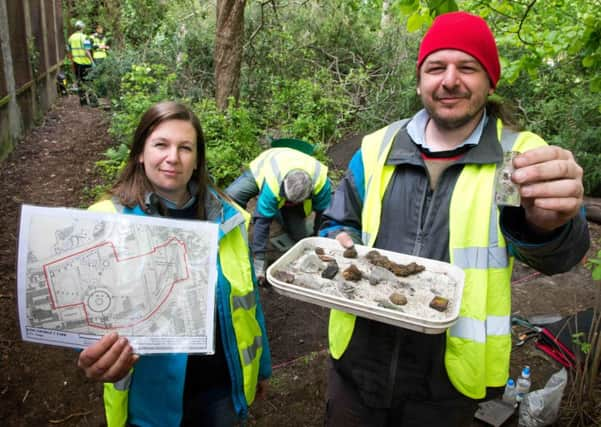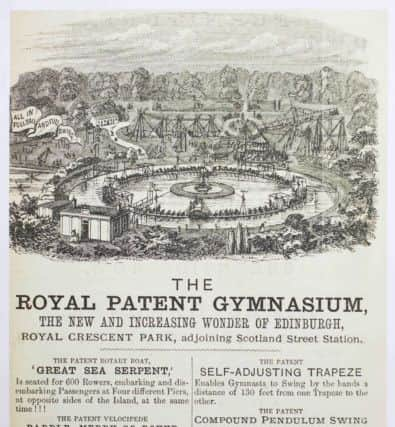Victorian ‘Alton Towers’ rediscovered in Edinburgh


Experts at Archaeology Scotland are trying to uncover the secrets of the forgotten theme park which was used by thousands of factory workers to shed pounds.
The open air gym, known as the Royal Patent Gymnasium, was billed as “The New Wonder of Edinburgh” when it opened in King George V Park in 1865.
Advertisement
Hide AdIt was designed for the city’s factory workers and saw residents work out on sensational machines such as the patent rotary boat or “Great Sea Serpent”.


The massive contraption, which is just one of a dozen of attractions, was a circular platform which allowed up to 600 people to row simultaneously.
The park also featured avast number of vaulting and climbing poles, rotary ladders, stilts, spring-boards, quoits, balls, bowls, and little boats and canoes on ponds.
And in winter the grounds were prepared for ice skaters.
The archaeological teams have now begun fresh excavations in a bid to deepen their knowledge of the unique gym’s industrial past and its contribution to sport.
Project manager Phil Richardson, 39, said: “I cannot think of anything else like it - it’s more like Alton Towers than what we’d think of as a gym.
“People working in the factories came here for exercise and play. We think that once we’ve done a bit more digging that we’ll be able to find some personal stories from the time.
Advertisement
Hide Ad“It was a bit more fantastical and game-based at this gym with a trapeze, pendulum swing and hammer throw which must have given it a bit of a funfair feeling.
“So in the sense, it would not have been as monotonous or repetitive as modern gyms. I think if you’re looking for a real work-out then it doesn’t compare very well.
Advertisement
Hide Ad“We’re trying to understand more about the grounds themselves architecturally and what people were actually standing on and the materials used.
“A lot of the people we work with are interested in the industrial past and this is really an extension of that.”
At the time, people came in droves for the bargain price of sixpence, which is about #1.20 in modern money.
Designed and paid for by businessman and philanthropist John Cox, the site aimed to engage residents in activities and keep them from less health-conscious activities in local taverns and gambling halls.
Exercise machines on the site included a 100-ft long see-saw named “Chang” which could raise 200 people 50ft into the air before lowering them to ground level.
It also featured a “velocipede paddle merry-go-round” which had a circumference of 160ft and could seat 600 people who would propel the machine by sitting astride on the rim and pushing their feet to the ground.
Advertisement
Hide AdHowever, the gym’s popularity waned in the latter part of the 19th century and experts now hope to discover the reason for the decline.
The grounds were eventually given over to Hanover and St Bernard’s football clubs and Phil feels the gymnasium played an important role in the growth of sport in the city.
Advertisement
Hide AdHe added: “John Cox funded it to create an affordable place for workers to exercise and enjoy themselves.
“I think it’s safe to assume it was initially very popular. It sounds amazing and a lot of the adverts from the time heavily promoted the fun aspect.”
Archaeology Scotland said the dig, funded by the Heritage Lottery, supported Crisis Skylight Edinburgh and WorldWide Volunteering, was also aimed at boosting community interest in historical sites.
Archaeology Scotland director Eila Macqueen added: “It’s quite hard work at times, down on your hand and knees in a trench for example,